
Carmel-by-the-Sea, often simply called Carmel, is a city in Monterey County, California, United States, founded in 1902 and incorporated on October 31, 1916. Situated on the Monterey Peninsula, Carmel is known for its natural scenery and rich artistic history. In 1906, the San Francisco Call devoted a full page to the "artists, writers and poets at Carmel-by-the-Sea", and in 1910 it reported that 60 percent of Carmel's houses were built by citizens who were "devoting their lives to work connected to the aesthetic arts." Early City Councils were dominated by artists, and several of the city's mayors have been poets or actors, including Herbert Heron, founder of the Forest Theater, bohemian writer and actor Perry Newberry, and actor-director Clint Eastwood, who served as mayor from 1986 to 1988.

Callen Radcliffe Tjader Jr. was an American Latin Jazz musician, often described as the most successful non-Latino Latin musician. He explored other jazz idioms, especially small group modern jazz, even as he continued to perform music of Africa, the Caribbean and Latin America.

The Forest Theater is an historic amphitheater in Carmel-by-the-Sea, California. Founded in 1910, it is one of the oldest outdoor theaters west of the Rockies. Actor/director Herbert Heron is generally cited as the founder and driving force, and poet/novelist Mary Austin is often credited with suggesting the idea. As first envisioned, original works by California authors, children's theatre, and the plays of Shakespeare were the primary focus. Since its inception, a variety of artists and theatre groups have presented plays, pageants, musical offerings and other performances on the outdoor stage, and the facility's smaller indoor theatre and school.
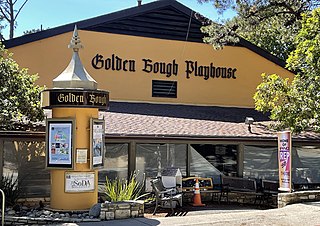
The Golden Bough Playhouse is a historic two-story theatre in Carmel-by-the-Sea, California on Monte Verde St., between 8th and 9th Avenues. The playhouse occupies the site of the former Carmel Arts and Crafts Club, Carmel's first cultural center and theatre, built in 1906–1907 on Casanova Street, and the Arts and Crafts Hall, built in 1923–1924 on an adjacent lot on Monte Verde Street. Since 1994, the facility has been owned and operated by Pacific Repertory Theatre, Monterey County's only year-round professional theatre company. A two-phase renovation of the aging facility began with an interior building project in 2011. A second phase project, including both interior and exterior renovations, is scheduled for 2021. The theatre was recorded with the National Register of Historic Places on July 3, 2002. It is significant as a California historic building because it is located on the original site of the Carmel Arts and Crafts Club and theatre, the oldest performing arts venues in Carmel.
LARES is an electronic sound enhancement system that uses microprocessors to control multiple loudspeakers and microphones placed around a performance space for the purpose of providing active acoustic treatment. LARES was invented in Massachusetts in 1988, by Dr David Griesinger and Steve Barbar who were working at Lexicon, Inc. LARES was given its own company division in 1990, and LARES Associates was formed in 1995 as a separate corporation. Since then, hundreds of LARES systems have been used in concert halls, opera houses performance venues, and houses of worship from outdoor music festivals to permanent indoor symphony halls.
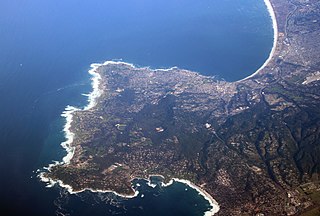
The Monterey Peninsula anchors the northern portion on the Central Coast of California and comprises the cities of Monterey, Carmel, and Pacific Grove, and the resort and community of Pebble Beach.
The Carmel Bach Festival (CBF) began in 1935 as a four-day series of concerts at the Sunset School Auditorium and the Carmel Mission Basilica in Carmel-by-the-Sea, California, United States. Over the years, it grew to a three-week series of concerts, recitals, master classes, lectures, and open rehearsals, and in 2009 the Festival was shortened to two weeks under the leadership of Music Director and Conductor Paul Goodwin.

Robert Stanton (1900-1983) was an American architect. A resident of Carmel-by-the-Sea, California, he practiced primarily in the central California coastal region, and was responsible for a variety of eclectic buildings, most notably the Monterey County Court House and the King City Joint Union High School Auditorium, both listed on the National Register of Historic Places. He worked closely with sculptor Joseph Jacinto Mora on several of his projects.
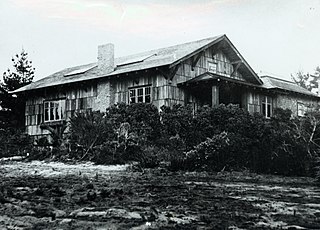
The Carmel Arts and Crafts Club was an art gallery, clubhouse founded in 1905, by Elsie Allen, a former art instructor for Wellesley College. The club was located at Monte Verde Street in Carmel-by-the-Sea, California, where the Golden Bough Playhouse is today. The clubhouse served as the Carmel community cultural center. It held dramatic performances, poetry readings, lectures, and was a summer school for the arts. Between 1919 and 1948 Carmel was the largest art colony on the Pacific coast.

The Las Tiendas Building is a two-story reinforced Spanish Eclectic style commercial building in downtown Carmel-by-the-Sea, California. The building is the best and only example of Spanish Eclectic commercial design by the architectural firm of Swartz & Ryland in Carmel. It has been designated as an important commercial building in the city's downtown historic district property survey; and was registered with the California Register of Historical Resources on February 15, 2003. The building has been occupied by the Club since 2006.

Edward Gerhard Kuster was a musician and attorney from Los Angeles for twenty-one years before coming to Carmel-by-the-Sea, California in 1921. He became involved in theater and establish his own theatre and school. He built the Theatre of the Golden Bough in 1924, and a second theater, the Golden Bough Playhouse in 1952. Kuster directed 85 plays and acted in more than 50 roles in the 35 years he lived in Carmel.

The Carmel Weavers Studio, also known as Cottage of Sweets, was Ruth Kuster's weavers studio, that was in front of the Theatre of the Golden Bough in Carmel-by-the-Sea, California. Ruth Kuster was the wife of lawyer and theatrical producer Edward G. Kuster. The studio qualified for inclusion in the city's Downtown Historic District Property Survey, and was registered with the California Register of Historical Resources on January 27, 2003. The building is occupied by the Cottage of Sweets.

The Seven Arts Shop, is a one-story, wood-frame Tudor Storybook retail shop in Carmel-by-the-Sea, California. During the 1930s, the building served as the reading room for the Christian Science organization. It has been designated as a significant commercial building in the city's Downtown Historic District Property Survey, and was recorded with the Department of Parks and Recreation on January 23, 2002. The building is occupied in 2022 by the beauty supply company Body Frenzy.

Sade's is a one-and-one-half-story, commercial building in downtown Carmel-by-the-Sea, California. It was built in 1925, for novelist and dramatist Harry Leon Wilson and his wife Helen MacGowan Cooke as a flower shop and dress shop. In the 1930s, Sade was a former Ziegfeld Follies dancer, made the lower level into a restaurant and bar that was nationally renowned. The building was designated as a significant commercial building in the city's Downtown Historic District Property Survey, and was recorded with the Department of Parks and Recreation on January 28, 2002. The first floor of the building is now occupied by the Porta Bella Mediterranean restaurant and bar. The second floor is occupied by Kids by the Sea.

The Wilson Building, also known as the Philip Wilson Building is a historic commercial building in downtown Carmel-by-the-Sea, California. It is an example of American Craftsman architectural style that was built in 1905 on the corner of Ocean Avenue and Dolores Street as a real estate office. In 1916 it became Carmel’s first official City Hall. The building qualified as an important building in the city's downtown historic district property survey and was recorded with the California Register of Historical Resources on November 30, 2002. The building is occupied by two tenants, the J. McLaughlin and The Agency.

The Schweninger Building is a historic mixed-use commercial building in Carmel-by-the-Sea, California. It was built in 1899, by Artie Bowen for Fritz Schweninger. It is an example of Vernacular style. The structure is recognized as an important commercial building in the city's Downtown Conservation District Historic Property Survey, and was nominated and submitted to the California Register of Historical Resources on July 25, 2002. The building has been occupied by the Carmel Bakery since 1899.
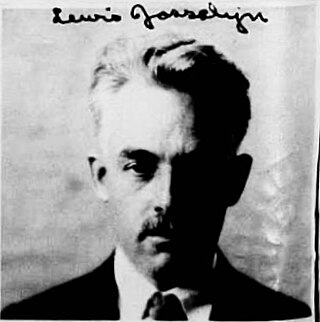
Lewis Josselyn,, was an American portrait, landscape, and community photographer and early resident of Carmel-by-the-Sea, California. He was the official photographer for the Forest Theater, a historic amphitheater in Carmel.

Hazel Watrous was an American writer who was co-founder of Denny-Watrous Management. The company presented performances in Carmel-by-the-Sea, California. She and Dene Denny played roles in founding the Carmel Music Society, the Carmel Bach Festival, and Monterey's First Theater. Their home, the Denny-Watrous Studio, became a hub for hosting musical concerts and lectures. In addition, they established the Denny-Watrous Gallery.
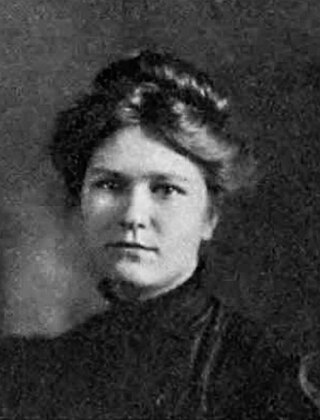
Dene Denny was an American musical theater producer who, along with co-founder Hazel Watrous, established the Denny-Watrous Management. They played pivotal roles in the inception of the Carmel Music Society, the Carmel Bach Festival, and Monterey's First Theater. Their residence, the Denny-Watrous Studio, served as a hub for hosting musical concerts and lectures. Watrous and Denny held a strong belief that Carmel had the potential to become the "epicenter of world-class music."


















